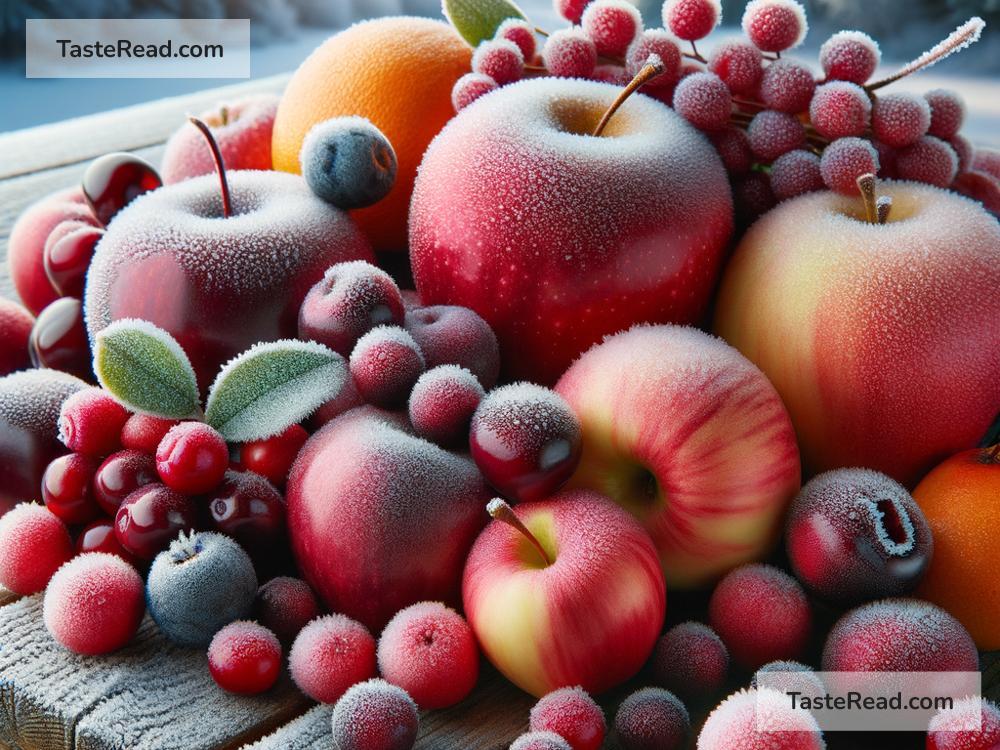Why Fruits from Colder Climates Taste Different
Have you ever noticed that fruits grown in colder regions taste different compared to fruits from warmer places? You might wonder why an apple from the cool hills is crisp and sweet, while a mango from tropical lands is rich and juicy. The way fruits develop their flavors is a fascinating process shaped by nature, climate, and the environment they grow in.
In this article, we’ll explore why fruits from colder climates have a unique taste and what makes them special. Don’t worry; we’ll keep things simple and easy to understand.
1. What Makes a Fruit Taste the Way It Does?
The flavor of a fruit is a combination of many elements: sweetness, acidity (sourness), aroma, and texture. These qualities depend on the fruit’s natural sugars, acids, and the compounds responsible for its smell and taste.
The environment in which the fruit grows plays a huge role in shaping these qualities. Factors like sunlight, temperature, water, soil nutrients, and even the length of the growing season influence the flavor profile of a fruit. In colder climates, these conditions create unique challenges—and opportunities—for fruits to develop their distinctive taste.
2. The Role of Cold Nights
Colder climates often experience chilly nights, even if the days are warm and sunny. Cold nights slow down the ripening process of fruits compared to warmer areas. When fruits ripen slowly, they have more time to develop complex flavors. Think of it like cooking a dish: a slow, gentle simmer often brings out richer tastes than rushing it over high heat.
For example, fruits like apples, pears, and berries grown in cooler places are known for their concentrated sweetness and balanced tartness. The cold weather helps preserve their natural acidity while allowing sugars to develop gradually. This combination of sweet and tart creates the crisp, refreshing taste we associate with fruits from colder regions.
3. Sunlight and Sugar Production
Fruits rely on sunlight to produce sugars through a process called photosynthesis. In colder climates, summers tend to be shorter, but the days can be longer. This means fruits get plenty of sunlight for sugar production during the growing season.
However, the cooler temperatures in these regions slow down how quickly the plant uses those sugars. As a result, fruits in colder climates often build up higher levels of sugar without losing their natural tartness. This is why fruits like cherries, strawberries, and apples from cool areas often taste sweeter and more flavorful than their counterparts from warmer zones.
4. How Frost Can Improve Flavor
Interestingly, frost can sometimes make fruits taste even better. Some fruits, like certain types of berries and grapes, are grown specifically in areas where frost is common. When frost touches the fruit, it causes the water inside the cells to freeze and break open. This process concentrates the fruit’s sugars, making them taste sweeter.
For example, ice wine—a special dessert wine made from frozen grapes—has an intense flavor because freezing enhances the sugar content of the grapes. Similarly, fruits like cranberries and lingonberries grown in frosty regions develop a tangy, bold taste that’s hard to find elsewhere.
5. Acidity: The Tart Side of Cold Weather Fruits
Another noticeable difference in fruits from colder climates is their acidity. Acid is what gives fruit its tangy, sour flavor. In colder weather, plants produce more acids as a way to protect themselves from freezing temperatures. These acids remain in the fruit, balancing out the sweetness and providing a fresh, zesty taste.
For example, you might notice that apples from cooler places, like Northern Europe or the Pacific Northwest of the United States, have a bright, tart flavor that pairs well with their sweetness. Similarly, berries from cold areas have a punchy tang that makes them stand out.
6. The Effect of Growing Seasons
Fruits from colder climates often have shorter growing seasons because the cold weather limits how long plants can produce fruit. This means farmers and plants have to work with less time to ripen the fruit. Shorter growing seasons encourage fruits to concentrate their sugars and flavors quickly, resulting in fruits with bold, well-developed tastes.
In contrast, fruits from warmer climates tend to grow year-round and ripen faster. Warm-weather fruits, like bananas, papayas, or mangoes, have a softer, mellower flavor profile because of the quicker growing process and lower acidity.
7. Examples of Fruits from Cold Climates
Some of the best-loved fruits from colder climates include apples, cherries, pears, plums, raspberries, blueberries, and cranberries. These fruits are prized for their crisp textures, vibrant flavors, and a perfect balance of sweet and tart notes. Thanks to their unique growing conditions, they’re often used in pies, jams, juices, and other delicious recipes.
8. Why the Taste Matters
The taste of fruit isn’t just about enjoying something delicious; it’s also about supporting local ecosystems. Cold-weather fruits have adapted to thrive in challenging climates, making them a vital part of their local environment. By appreciating the unique flavors of fruits from colder regions, we celebrate the diversity of nature and the skill of farmers who grow them.
Conclusion
Fruits from colder climates taste different because of their slow ripening, concentrated sugar levels, refreshing acidity, and unique environmental conditions. From crisp apples to flavorful berries, these fruits are a treat for our taste buds and a testament to the beauty of nature.
Next time you bite into a sweet, tart apple or enjoy a handful of juicy cherries, remember that their amazing flavor is thanks to the chilly weather they grew in!


